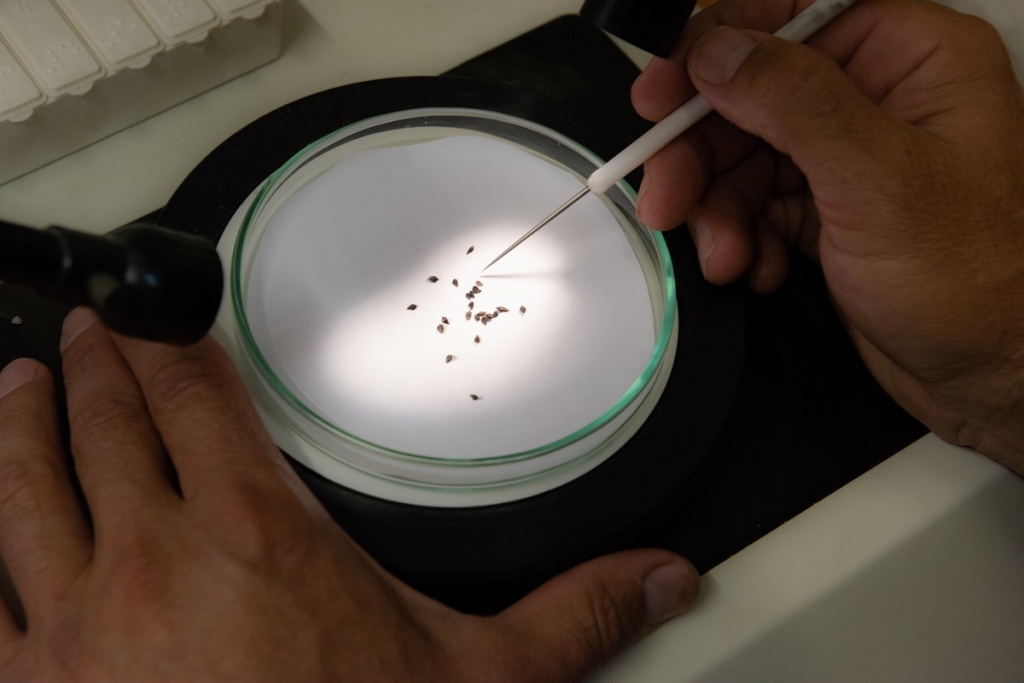Paleontologists at the Faculty of Geology and Geography summed up the results of their expedition to one of the largest burial sites of mammoth fauna in Eurasia – the Volchia Griva tract in the Novosibirsk Region. For the first time, the Tomsk paleontologists and their Estonian counterpart, Leeli Amon-Veskimeister, succeeded in discovering the seeds of ancient plants alongside the bones of ancient animalsh. These seeds of reeds, sedges, and other moisture-loving plants will help to reconstruct the picture that surrounded mammoths in the period of their extinction.
The expedition, led by Sergey Leshchinskiy, the head of the Laboratory of the Continental Ecosystems of the Mesozoic and Cenozoic of the Faculty of Geology and Geography, spent almost a month digging in the tract of the Volchia Griva (Mamontovoye village, Kargatsky district, Novosibirsk Region). More than 400 findings have been recovered from the excavation area of 8 square meters that scientists identified for research. 99% are mammoth bones, and the bones of other animals are unique - these are the remains of horses, foxes, and rodents.

One of the important results of the expedition was the discovery of several dozen seeds of ancient plants. To distinguish them, scientists had to pass the whole bone-bone horizon first through a sieve with millimeter-sized holes, and then through a 0.1 mm sieve.
- We have been convinced that the bones of mammoths we found were buried in the so-called “slab bath”: a moist place on the salt lick where water stood periodically. It is geologically clear that this was a wet place - mud, in fact, and now we have received additional paleontological confirmation of this, - said Sergey Leshchinskiy.
Leeli Amon-Veskimeister, a paleocarpologist from Tallinn Technological University, was also engaged in the search for paleontological material with Tomsk scientists. A paleocarpologist is a specialist who studies the seeds and fruits of plants from past geological periods. This is a rather rare area, so she came to TSU as a participant of the International Field School-Seminar Paleobiocenosis of the Mesozoic and Cenozoic Northern Hemisphere. At Volchia Griva, scientists are searching for the causes of the last extinction of the largest continental mammals, which occurred about 10,000 years ago.
- Seed research allows us to more accurately recreate the picture that surrounded woolly mammoths. The study of the seeds from the section of the Volchia Griva is just beginning, but we can say that among them there are reeds, sedges, and other moisture-loving plants. I hope that this winter I will be able to return to TSU on the Erasmus + program and compare these seeds with the TSU botanical collections, - says Leeli Amon-Veskimeister.
